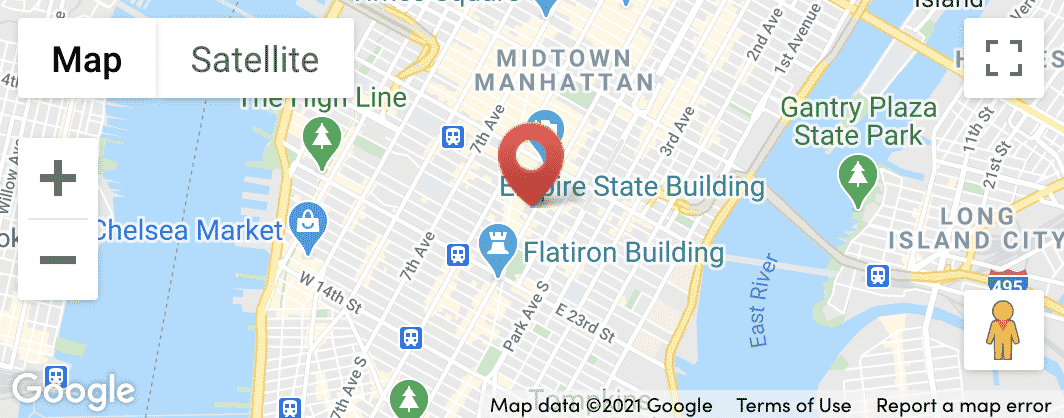Somatic Therapy
Somatic Therapy in NYC
Strengthen the connection between your mind, body, and spirit to improve your wellbeing.
SOMATIC THERAPY IN NYC
What Is Somatic Therapy?
Have you ever felt a pit in your stomach even when you weren’t thinking of anything anxiety-inducing? Or have you ever gotten a therapeutic massage that released stress you didn’t even realize was there?
Sometimes, mental and emotional health issues aren’t just “in your head.” Your mind and body are connected, so your body sometimes holds onto stress, trauma, and tension, even in the absence of triggers. Somatic therapy acknowledges this connection and thus aims to treat health issues through holistic, body-centric methods.
This form of therapy, also known as somatic experiencing, was first used to help trauma survivors cope with symptoms like sleeplessness, flashbacks, irregular eating patterns, and more. Today, it’s used to help with a variety of issues, including depression, anxiety, stress, relationship problems, abuse, chronic pain, and more.
What Does Therapy for Somatic Experiences Look Like?
Here’s a small exercise: stop what you’re doing, close your eyes, and take a few deep breaths. Put all your focus into breathing properly. How do you feel afterward? Did that physical activity help release built-up stress and clear up your mind, even if only slightly?
If so, that’s wonderful.
The principles behind somatic therapy follow the same vein. What your body goes through affects your mind, and vice versa.
A typical strategy employed in somatic therapy sessions combines talk therapy and mind-body exercises. With this modality, a therapist can help you recall traumatic memories within a safe, contained space. While you recall those memories, you and your therapist will be making note of your physical responses and encouraging you to pay attention to the physical sensations (e.g. feeling like your throat is constricting, hunching up your shoulders, tension, sensations, etc.).
To mitigate these responses, a therapist can guide you through physical exercises to help your body release and dissolve conscious and unconscious tension.
Some examples of techniques used in somatic therapy include breathwork, visualization, dance, joyful movement, vocal work, yoga, exercise, meditation, grounding, and sensory awareness work. By connecting your mental and emotional issues with physical sensations, somatic therapy can help you:
- Develop an increased awareness and appreciation of your body, movement, and physical responses
- Describe your problems in greater detail and pinpoint healthier solutions
- Release tension by alternating between stressful thoughts and sensations, and non-stressful thoughts and sensations
- Ground yourself within the present moment
- Learn and practice strategies to calm yourself in the here-and-now
- Strengthen healthy boundaries in your relationships
- Find emotional release by using new physical tools to cope with replaying past situations
THERAPISTS WHO CAN HELP
NYC Therapists Who Specialize in Somatic Therapy
Connecting with the right therapist is the most important factor in your search. We’re here to help you find a great match.
Can Somatic Therapy Help Me?
Being overwhelmed by trauma, addiction, anxiety or depression and accompanying physical sensations can be an exhausting cycle. If you’ve been through traditional talk therapy for mental health issues or traditional remedies for certain physical health issues and didn’t find relief from your troubles, it can’t hurt to try somatic therapy.
It doesn’t have any specific risks, as it doesn’t require any specialized equipment or medication. Somatic therapy has been successfully used for issues such as:
-
Addiction
-
Chronic pain
-
Sexual dysfunction
-
Digestive issues
Aside from these challenges, anyone simply looking to gain a better understanding of themselves and their life experiences can benefit from learning mindfulness and grounding work through somatic therapy with one of our NYC Somatic therapists.
What Evidence is there that Somatic Therapy Works?
A 2017 study of the effects of somatic therapy on PTSD has pointed to its use in helping patients reduce the time they need to heal from the traumatic event. 63 patients were sorted randomly into three groups, and their recovery was examined through three evaluations. The first evaluation, held before treatment, showed no differences between the three groups.
However, the second and third evaluations, held during and after treatment, showed that the groups that received somatic therapy displayed reduced severity of PTSD symptoms and depression. These results are encouraging and provide evidence that somatic therapy can help people who are struggling.
What is the difference between somatic therapy and somatic experiencing (se)?
A somatic therapy session aims to help the client become aware of the connection between their body and their mind, while somatic experiencing focuses primarily on helping a client process and heal from traumatic events.
A somatic experiencing session may involve activities such as tracking body sensations, mindfulness, and resource building, while somatic therapy may include breathwork, visualization, and body movement activities. Both modalities work to help clients to process and heal from stress, trauma, and difficult emotions.
Are There Alternatives to Somatic Therapy?
If you’re interested in exploring the benefits of somatic therapy with one of our New York City therapists, but are hesitant about seeking professional help, you can easily get started at home with simple somatic exercises, such as those listed here. Some of the examples include:
- Progressive Muscle Relaxation and Grounding yourself by tensing and relaxing different parts of your body. If you’re sitting in a chair, hold onto the armrests and squeeze as hard as you can. After a few seconds, slowly relax your muscles and pay attention to how it feels.
- Visualizing a safe space in your mind. Think of a time and place (or conjure up a new one) where you felt happy and safe. Imagine yourself there by focusing on sensations, colors, sounds, textures, and smells. Focus on how comfortable it feels.
- Self-soothe by hugging yourself. Cross your arms in front of your chest by putting your left hand on your right shoulder and your right hand on your left shoulder. Hold the position as long as you need. The physical sensation can help you feel safe and contained. Alternatively, you can also hold your right hand lower (over your heart) and focus on your heartbeat.
It’s okay if you don’t feel ready to begin therapy just yet.
And there’s no need to force yourself to try it out — there’s no “one-size-fits-all” therapy method, so what worked for others may not work for you. There are a lot of therapy methods out there, and you’ll find the right one someday. Read about breathwork techniques for anxiety, or explore our blog for more practical tips to see what feels right for you.
Are You Ready To Heal Your Mind and Body?
Get in touch today.
Somatic therapy can help you deepen the connection between your mind and body to understand, process, and resolve your emotional health concerns. To learn more, schedule a free consult with one of our NYC therapists who specialize in somatic therapy.

